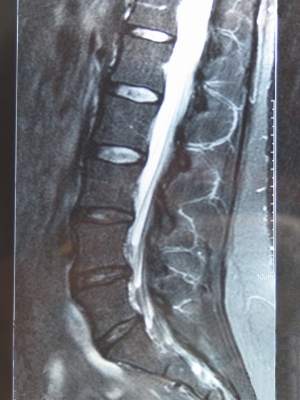
Herniated Discs
Whether they are referred to as herniated discs, slipped discs or ruptured discs, the pain and associated symptoms that come with them are all the same: significant, and sometimes enduring. The level of pain associated with a ruptured disc can be quite sever, and the result can mean a loss of the ability to engage in normal exercise activities, sports, and even routine daily tasks, like driving to work in the morning.
When it comes to herniated lumbar discs (those that affect the lower back) there are many options for dealing with a herniated disc, and it is important to know about the expected effectiveness of those treatment options, as well as their associated risks.
All serious and persistent pain should be checked out by a doctor with the proper diagnostic tools at his disposal. Ruptured discs are relatively common, but you want to rule out other possible explanations for your pain that might require a different type of treatment plan. For example, some back pain is caused by diseases of the internal organs. The point is, that it is good to have the tests run that will determine the cause.
However, once the cause of ruptured disc is determined, it is important to understand what led to the problem in the first place. While doctors might be inclined to write a prescription for the pain, or even suggest surgery, neither of these modalities will likely resolve the underlying problem that created the environment in which the disc rupture could occur.
In most cases, the causes of a disc rupture are related to how the muscles in the surrounding areas of the body are performing relative to one another. What does that mean? It means that many muscles work as groups, and they must be in a relatively similar state of strength and flexibility in order to work well together.
When one is stronger than the other, or when one is more flexible than the other, it will take over for the stronger muscle and two things will happen. First is that by taking over, by absorbing more of the workload, those strong muscles get stronger and the weak ones get weaker. So, a self-fulfilling adverse cycle is set into motion. Second, the ongoing imbalance of the muscles will exert forces on the skeletal structures around them, causing the structure to get out of alignment. Once out of alignment, structural deterioration is set into motion, and sometimes the result of that deterioration is a slipped disk.
Surgical methods for correcting a slipped disc focus on repairing the structure, but they do nothing to address the system issues that led to the structural issues. And, they carry risk of serious complications. But even when these surgeries go out without a hitch, they leave patients with the same muscle balance issues as existed prior to the disc rupture.
In order to fully resolve the issue, that balance of strength and flexibility must be set back to equilibrium. Anything short of that will be a set-up for further problems.
|
|





